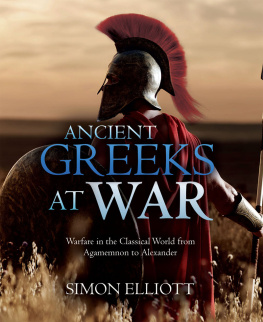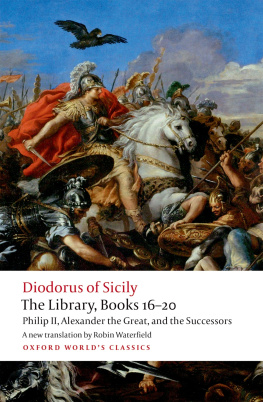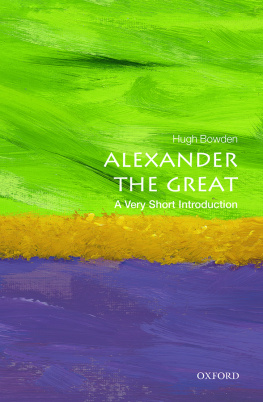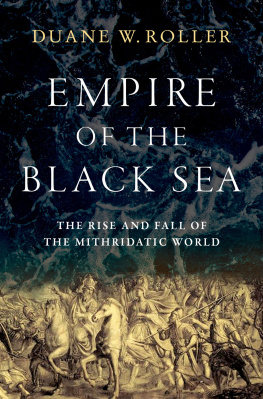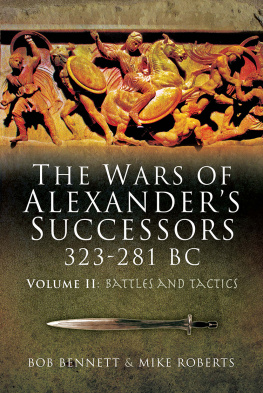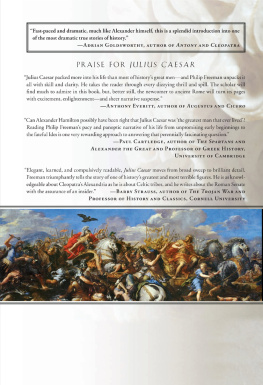'The oikoumene was the name the ancient Greeks gave to what they saw as the inhabited world. In Age of Conquests, Angelos Chaniotis tells the story of the Hellenistic oikoumene - its staggering cultural diversity, as well as the people, ideas, and events that unified it for centuries. Chaniotis boldly breaks with the traditional chronological divisions of ancient history and writes of the long Hellenistic era from the reign of Alexander to Hadrian. Anyone interested in the great cultural achievements of the ancient Greek world will profit greatly from this ambitious book by a leading historian.' Alain Bresson, author of The Making of the Ancient Greek Economy: Institutions, Markets, and Growth in the City-States
'A wide-ranging and lively history of the Greek East that offers a rare combination of erudition and accessibility.' Andrew Erskine, University of Edinburgh
'Angelos Chaniotis conveys all the richness and excitement of an extraordinary era in human history in this new work. The period of Greek history after the death of Alexander is the story of the rise and fall of empires and kingdoms, of a new global Greek world stretching from Cyrenaica to Afghanistan, and of the struggle of the cities of the 'old' Greek world to maintain their position. But it is also a period of intense cultural and scientific creativity, in which rulers were widely worshiped as gods, and where for the first time our sources reveal details of the lives of everyday Greeks and foreigners. There is no one who knows the evidence for the long Hellenistic Age better than Angelos Chaniotis - and in Age of Conquests he brings this canvas to life.' Tom Harrison, University of St Andrews
'The period that begins with the conquests of Alexander the Great and ends with the reign of the Roman emperor Hadrian is one of the most important and tumultuous in world history. Jesus Christ, Cleopatra, Julius Caesar, and Nero are only a few of the figures who lived during this era. Greeks and Greek-speakers played a crucial role during these years and bear witness to a number of astonishing phenomena - the emergence of Christianity, the consolidation of the Roman Empire, the founding of the library in Alexandria, and lasting developments in philosophy, literature, political thought, and technology. Angelos Chaniotis brings the Hellenistic age to life with remarkable learning, mastery of evidence, and sensitivity. His book offers a brilliant picture of the cosmopolitan Greek world and shows why it still matters to us today.' Phiroze Vasunia, author of The Gift of the Nile: Hellenizing Egypt from Aeschylus to Alexander
ALSO BY ANGELOS CHANIOTIS
War in the Hellenistic World: A Social and Cultural History
AGE OF CONQUESTS
THE GREEK WORLD FROM ALEXANDER TO HADRIAN (336 BC-AD 138)
ANGELOS CHANIOTIS

First published in Great Britain in 2018 by PROFILE BOOKS LTD
3 Holford Yard
Bevin Way
London
WC1X 9HD
www.profilebooks.com
Copyright (c) Angelos Chaniotis, 2018
The moral right of the author has been asserted.
All rights reserved. Without limiting the rights under copyright reserved above, no part of this publication may be reproduced, stored or introduced into a retrieval system, or transmitted, in any form or by any means (electronic, mechanical, photocopying, recording or otherwise), without the prior written permission of both the copyright owner and the publisher of this book.
A CIP catalogue record for this book is available from the British Library.
eISBN 978 1 86765 421 2
To the memory of John Davey
CONTENTS
LIST OF MAPS
: Asia Minor
: The Roman Empire under Trajan and Hadrian

Greece and western Asia Minor

Alexander's campaign

The Hellenistic world

South Italy and Sicily during the campaign of Pyrrhos

Asia Minor

The Seleucid kingdom and the Greco-Bactrian kingdoms

The empire of Augustus

The Roman Empire under Trajan and Hadrian
LIST OF FIGURES
. Gold coin of Arsinoe II, third century BC. Photo (c) CM Dixon/Print Collector/Getty Images
. Bronze statue of a prince, third/second century BC. National Museum of Rome. Palazzo Massimo, Italy. Photo (c) B O'Kane/Alamy Stock Photo
. The ruins of the Temple of Augustus and Rome. Ankara, Turkey, first century AD. Photo (c) eFesenko/Alamy Stock Photo
. The south portico of the Sebasteion of Aphrodisias with mythological images. Aphrodisias, mid-first century AD. Photo (c) Angelos Chaniotis
. Portrait bust of Emperor Augustus, first century AD. Munich Glyptothek. Photo (c) Erin Babnik/Alamy Stock Photo
. Odeon of Herodes Atticus. Athens, mid-second century AD. Photo (c) imageBriker/Alamy Stock Photos
. The main avenue in the Roman colony of Dion in Macedonia from the north. Photo (c) Dion Excavations. Courtesy Korina Vasteli
. The gymnasium of Ai-Khanoum, mid-2nd century BC. Photo (c) Delegation Archeologique Francaise en Afghanistan, 1975
. The grave relief of the slave-merchant Aulus Caprilius Timotheos. Amphipolis, c. AD 100. Supplementum Epigraphicum Graecum XXVIII 537. Photo (c) J. Roger, "Inscriptions de la region de Strymon, Revue Archeologique 6 (1945), 47
. Marble sculpture depicting Glykon. Tomis. Second century AD. Archaeological Museum Constance, Romania. Photo (c) DEA/G. Dagli Orti/Getty Images
. Mathura relief sculpture with scenes from the Wandering of the Buddha. Mathura, second century AD. Photo (c) Barney Burstein/Getty Images
PREFACE
This book has been written for a non-specialised audience. It aims to provide general information about the main historical developments in politics, society and religion in the areas in which Greeks lived after the Classical period. The book covers two historical periods which are commonly treated separately: the Hellenistic period, which conventionally starts with the campaigns or the death of Alexander the Great (334 or 323 BC) and ends with the death of Cleopatra (30 BC), and the early Imperial period, from the establishment of Augustan monarchy (27 BC) to the death of Hadrian (AD 138). In the Introduction, I explain how the joint treatment of these two periods contributes to a better understanding of social and cultural developments. The title


